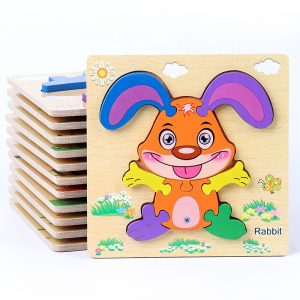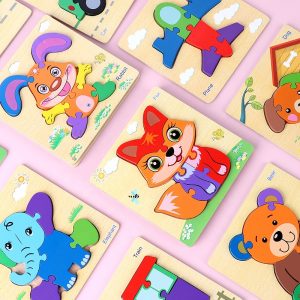When we start to play with puzzles, as parents, we have to show our babies how to put together a picture, and introduce the name of each puzzle one by one, which can be a bit more vivid. It is impossible for the baby to deduce the placement of each piece by himself. He needs to gradually remember the placement position from a certain part and master the fine motor skills of alignment and embedding in each operation. For example, my fire truck puzzle starts with the relative positions of the gorilla’s head, body, and neck. It is difficult for him, but he has the patience and interest to complete, and I will encourage him when he is in a hurry.
In this different age group, babies may compare their obsessions and puzzles with certain activity themes. They can play for a long time. At this time, we can make more important puzzles for the baby to play. For example, for the fire truck puzzle that my baby can work independently in about two weeks, he must play it every night and he can concentrate on it for a long time.
In the previous stage of the puzzle, the baby can completely ignore the graphic details on each piece, and is “blind” only by whether the shape matches. But at this stage of the puzzle, you must pay attention to the graphic details, otherwise it will be difficult to “match it”. When judging, the details of the pattern are the main reference, and the shape is the auxiliary reference.
Each board has its own four shapes made of different small pieces. Bright and simple animal research topics, only such an animal is convenient for babies to judge. My baby has a period of time and the super user likes to go through this important puzzle, repeat the puzzle, and no one is allowed to disassemble it after the puzzle is completed. After each puzzle, he happily stepped on the puzzle activity and ran back and forth several times.
The characteristic of this puzzle is that the shape of each puzzle is the same, or at least very similar. Instead of memorizing the position by the shape, position and direction of the image details, and arranging adjacent blocks. To occupy a place on the puzzle board, you must form a complete picture in your mind. This is difficult for a small child, even if there is a reference completion map nearby. The completion of this puzzle requires the reasoning of the graphic details and the memory of the entire image.
In the process of customizing the puzzle, it is recommended to choose the one with a clear and simple image at the beginning, and with a large degree of image differentiation between blocks. Everyone can provide a reference experience.
















